Photo of a Redwood on the way to The Headwaters Forest. It's an Old Growth Park with an excellent paved trail that's popular with people on wheels... Bicycles, Baby Buggies, Skateboards, Tricycles and Wheelchairs...
https://www.blm.gov/programs/national-conservation-lands/california/headwaters-forest-reserve
American History: MAXXAM - Charles Hurwitz and Michael Milken Junk Bonds... Earth First!
The 7,472-acre Headwaters Forest Reserve was established in 1999 after a decade-long grassroots effort to protect the world’s last unprotected, intact, old-growth redwood forest ecosystem. Several threatened species call the Reserve home, including coho salmon, the northern spotted owl, and the marbled murrelet. Deep in the heart of the Headwaters, old-growth forest is the beginnings or headwaters of the South Fork Elk River and Salmon Creek. This is how the area got its name. The Reserve is managed by the BLM in partnership with the California Department of Fish and Wildlife.
There are two public trails in the Reserve. The Elk River Trail winds along the South Fork Elk River for 3 miles, followed by a 2-mile ascent to a short loop through an old-growth redwood forest. Interpretive signs along the first mile of trail describe the history of Falk, the historic company mill town once located along this section of trail.
To Get There: Drive North on Highway 101 and Turn Right at ELK RIVER ROAD Just before you get to Eureka. Travel a Couple of Miles Down That Road and Take Another Right at the Sign that says Headwaters Forest... Keep on Going Until You Get There...


Highway 101 Just South of Eureka











There are Maps in the Quest Box for a Guided Tour of the Forest... A Ranger Built Educational Adventure...






A Free Concert in Old Town Eureka!
An unknown Tie Dye Artist...
Had these Shirts for sale...






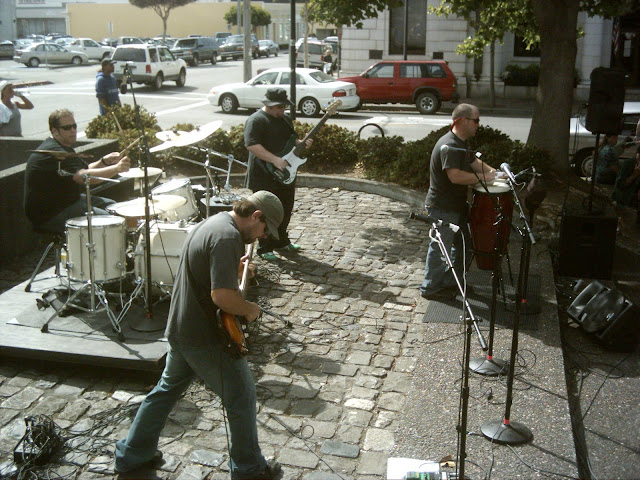



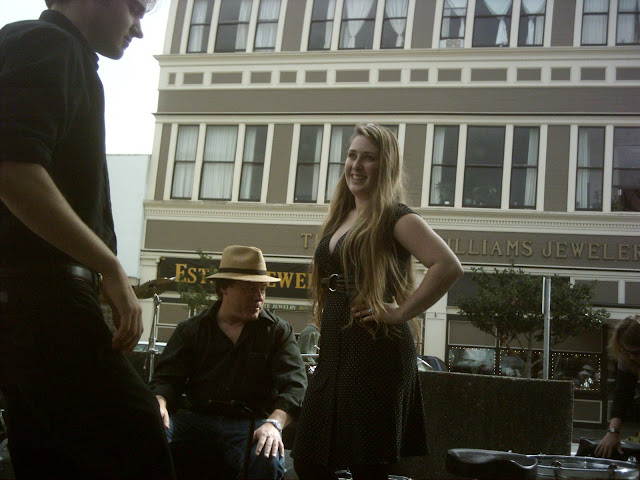
Samantha Toste - singer for Eureka CA Bands.
Vintage Soul and Blue Rhythm Revue.
Soon to Be Tim Day's Wife!
https://www.youtube.com/watch?v=vX2utDYfzCY
Samantha Toste sings
"With a Little Help from my Friends"
Blue Rhythm Revue Band
Highway 101 Just South of Eureka










There are Maps in the Quest Box for a Guided Tour of the Forest... A Ranger Built Educational Adventure...






~~~~~~ (~);-} ~~~~~~
and Now for something Completely Different!
~~~~~~ (~);-} ~~~~~~
A Free Concert in Old Town Eureka!
An unknown Tie Dye Artist...
Had these Shirts for sale...
Samantha Toste - singer for Eureka CA Bands.
Vintage Soul and Blue Rhythm Revue.
Soon to Be Tim Day's Wife!
https://www.youtube.com/watch?v=vX2utDYfzCY
Samantha Toste sings
"With a Little Help from my Friends"
Blue Rhythm Revue Band
~~~~~~ (~);-} ~~~~~~
and Now for something Completely Different!
~~~~~~ (~);-} ~~~~~~
American History: How the Headwaters Forest Came to Be:
https://www.multinationalmonitor.org/hyper/issues/1994/09/mm0994_07.html
Ravaging the Redwood: Charles Hurwitz, Michael Milken and the Costs of Greedby Ned Daly
The fate of the largest unprotected redwood forest in the world may now rest in the hands of an unlikely savior, the Federal Deposit Insurance Corporation (FDIC).
Since the 1985 MAXXAM takeover of Pacific Lumber, the redwood ecosystem known as the Headwaters Forest, located in Humboldt County on California's North Coast, has been under siege. Lawsuits, direct action, legislative efforts and all other attempts at preservation have so far failed to curb MAXXAM's ravenous appetite for redwood lumber. Now many environmentalists and community activists are hoping the FDIC can stop the forest from falling victim to corporate greed. The federal agency may be able to acquire the redwood forest as partial or full payment for the $548 million outstanding claim against the United Financial Group (UFG), a holding company for United Savings Association of Texas (USAT), a failed savings and loan controlled by MAXXAM and its chief executive officer, Charles Hurwitz.
Hurwitz is not averse to transferring part of the Headwaters Forest to federal government control, but he is insisting on rather different terms than environmentalists are proposing. Ignoring the fact that a company he controls, UFG, owes $548 million to the government, he has asked the government to pay him $600 million cash for a small grove of redwoods; if the offer is refused, he has threatened to liquidate the forest.
"If the federal government does not purchase the Headwaters Forest, Pacific Lumber will go ahead with its timber operations," says MAXXAM's Director of Public Relations Scott Lamb.
A Wall Street Journal article said Hurwitz's proposal "brings new meaning to the term greenmail." Hurwitz paid approximately $900 million for the 196,000 acres owned by Pacific Lumber. If the government were to accept his proposal to buy 4,500 acres for $600 million, Hurwitz would earn a profit of more than 2,800 percent.
The people of California's North Coast know Charles Hurwitz and MAXXAM well enough to take his threat seriously. Twice in 1992, the company cut hundreds of trees in the old-growth grove of Owl Creek on holidays and weekends when state regulators were not working, in violation of the California Board of Forestry cutting regulations. Both times the cutting was eventually stopped by court injunction. Under current plans, MAXXAM will harvest all the remaining old-growth redwoods it owns within the next 14 years.
One of the last stands
The government's response to MAXXAM and Hurwitz's threat will determine the fate of a unique ecosystem.
Many trees in the Headwaters Forest are as old as 2000 years. The cornerstones of an old-growth ecosystem are species diversity and a continual recycling process interlocking life and death. After a 300- foot redwood falls, it serves as a nurse log to help new seedlings grow. The seedlings grow right out of the nurse log, which provides nutrients to the new trees as it decays. As the older tree falls, it creates one of the few canopy breaks in an otherwise shady forest floor. The nurse log lies basking in the sunlight, offering the new seedlings essential light as well as nutrients.
Logging, especially clearcutting, stops this ecological recycling process and seriously threatens the forest's ability to regenerate. When loggers remove cut trees, they also remove the nutrients that the trees would have returned to the soil. The soil itself will be lost after a rain because it no longer has trees holding it in place. As topsoil is depleted, desertification begins.
Though the redwood forests still support a diverse array of species, including California black bear, mountain lion, Pacific fisher and steelhead trout, logging is taking a severe toll on forest wildlife. Many rare and endangered species also call the redwoods of Humboldt County home, among them the northern spotted owl, marbled murrelet, pacific giant salamander, tailed frog and coho salmon. Their survival is dependent on a diverse and healthy old-growth forest.
Carl Ross, co-director of Save America's Forests, the nation's largest grassroots forest protection organization, says, "If we fail to protect these last stands of redwoods, we will lose one of the greatest wonders of the living world for all time. Less than 4 percent of native redwoods are still standing, and that tiny percentage is being hacked and cut for the last shred of money that can be sawed from their red roots. If we allow the extinction of these largest of all living things, we will be condemned as a society that knew the price of everything and the value of nothing."
Takeover plunder
The redwoods of Humboldt County may seem a long way from Houston, and United Savings Association of Texas, but whether the FDIC decides to pursue the connection may determine whether the Headwaters Forest survives.
There was little need to worry about the Headwaters Forest before Hurwitz's takeover of the Pacific Lumber Company. The family-run business was one of the most economically and environmentally sound timber companies in the United States. Pacific Lumber rarely if ever clearcut; it generally left standing 30 to 50 percent of the timber in a harvested area. This not only created natural canopy break for new growth, it also kept much of the soil stable, increasing the forests' growth potential.
The company was also generous to its employees. Pacific Lumber rented housing at below market rates to employees and maintained a "no layoff" policy despite downturns in the timber market. The company also funded a very generous pension fund.
Pacific Lumber's strength soon became its weakness, however. The pension fund was overfunded by $60 million, and, because of its sustainable cutting practices, the company held tremendous assets (old- growth redwoods) that could be liquidated quickly. Assessing Pacific Lumber in 1985, Charles Hurwitz decided it was ripe for a takeover, and he plucked it in the fall of that year.
Almost immediately after the takeover, Hurwitz raided the pension fund and doubled the rate of cutting to pay off the loans and junk bonds used to finance the takeover. If there was any doubt about Hurwitz's intentions and his dedication to preserving the sustainability of his new acquisition, it was cleared up in his first meeting with the workers of Pacific Lumber. Hurwitz was quoted by Time magazine as telling his new employees, "There is the story of the golden rule: he who has the gold rules."
Creative financing
The story of MAXXAM's takeover of Pacific Lumber is itself a tale of intrigue, shady dealings and questionable business practices. MAXXAM announced that it would make a cash tender offer for Pacific Lumber on September 30, 1985. Drexel, Burnham, Lambert structured the financing, which consisted of a $300 million short-term loan from the Irving Trust Company and $450 million dollars worth of junk bonds sold by Michael Milken's high-yield bond department at Drexel Burnham.
Shortly after MAXXAM made its offer, the New York Stock Exchange (NYSE) initiated an investigation into the heavy volume of trading in Pacific Lumber stock which took place in the days before MAXXAM made its offer. A House Energy and Commerce Subcommittee on Oversight and Investigation report states that the NYSE investigation uncovered significant evidence of insider trading and parking stock, although no civil or criminal actions were brought against MAXXAM or its associates for their activities related to MAXXAM's purchase of Pacific Lumber.
The NYSE investigation, the subcommittee's report and subsequent congressional hearings all make a strong case that stock parking took place. Parking stock is the practice of buying stock for another party in order to conceal the identity of the true or eventual owner. If Hurwitz had someone park stock for him, he could have accumulated Pacific Lumber stock anonymously and at a lower price than after the company was put "into play" (when it became known a single party was accumulating large blocks of the company's stock), which would drive the price of stock up almost immediately.
Boyd Jefferies, former chairperson of the Los Angeles brokerage firm Jeffries Group, Inc., who later pleaded guilty to parking stock for Ivan Boesky, accumulated 539,600 shares of Pacific Lumber stock and sold the shares on September 27 to MCO Holding Company, a Hurwitz-controlled enterprise. Presumably, this purchase gave Hurwitz enough stock to begin the hostile takeover of Pacific Lumber which he commenced three days after MCO purchased the stock.
Hurwitz and Jefferies both deny any prior agreement to park stock, but Energy and Commerce Committee Chair John Dingell, D-Michigan, and Representative Ron Wyden, D-Oregon, concluded in October 1987 that it was unlikely that the sale took place without a prior agreement, because the stock was sold well below the trading price on September 27, 1985. Since there had been so much trading before Hurwitz's offer, the stock price had already begun to rise. On September 27, Pacific Lumber was trading at close to $34 per share. In what was probably one of the more philanthropic stock sales ever seen on Wall Street, Jefferies sold the Pacific Lumber stock at $29.10 rather than its market trading price of $34. The discount sale was not attributable to a prior agreement, according to both parties, but apparently to the fact that Boyd Jefferies felt good-hearted that day.
Jefferies' generosity was not enough to ensure the financial stability of the newly acquired company. Though the interest payments on the junk bonds Hurwitz and MAXXAM used to finance the takeover were not due for four years, it was evident soon after the purchase of Pacific Lumber that it would be difficult to cover the debt. The annual interest payment on the junk bonds was more than the historical annual profit of Pacific Lumber.
To make the bonds more attractive to potential bidders, MAXXAM announced it would terminate the pension plan and sell most nontimber assets to pay the bank loan. MAXXAM also decided it would increase Pacific Lumber's timber cutting rate to pay off the junk bonds.
Getting to the pension fund required some slick maneuvering. According to William Bertain, a lawyer representing shareholders in Pacific Lumber and residents of Humboldt County in a suit against Pacific Lumber, the company attempted to protect the pension fund before Hurwitz's raid by declaring that the pension fund's excess $60 million would vest directly to the employees and retirees in the event of a hostile takeover.
Under pressure from a suit by MAXXAM, the Pacific Lumber board of directors agreed to a "friendly takeover," and MAXXAM agreed to defend the Board if it was found to have breached its fiduciary duty to the shareholders. MAXXAM increased its offer by $1.50 a share, for a total increase of approximately $33 million. But since it was now undertaking a friendly takeover, MAXXAM had access to the $60 million excess in the pension fund - so MAXXAM came out $27 million richer, despite the higher price paid.
Hurwitz was later sued by the U.S. Department of Labor and employees for investing Pacific Lumber's pension fund with the now-failed Executive Life Insurance Co. allegedly in return for Executive Life's junk bond financing of the Pacific Lumber takeover. The suit is still pending.
Failing Finances
Three years after MAXXAM's takeover of Pacific Lumber, another piece of Hurwitz's empire, United Savings Association of Texas, failed. The circumstances of the failure remain hazy. Although MAXXAM's Lamb claims that "USAT's decline can be attributed to a decline in the Texas real estate market," the S& L's deep involvement in Michael Milken's junk-bond schemes appears to have been an important factor in its downfall.
By the time USAT failed in 1988, Hurwitz had already gained the attention of regulators. In 1971, Hurwitz was sued by the Security and Exchange Commission for alleged stock manipulation, and charged by New York State regulators with looting Summit Insurance Company. Hurwitz was not found guilty in either case.
In the three years prior to its failure, USAT purchased more than $1.3 billion worth of junk bonds underwritten by Drexel Burnham. During those same years, the Milken group raised about $1.8 billion for Charles Hurwitz and his takeover ventures, including the takeover of Pacific Lumber, according to a FDIC lawsuit against Michael Milken.
The FDIC told the United Financial Group (UFG) that the company and its officers are liable for breach of fiduciary duty for wrongfully failing to maintain the net worth of a failed savings and loan. The FDIC also alleges that Hurwitz used USAT to aid Michael Milken's scheme to manipulate the junk bond market. And the FDIC accused UFG of wrongfully causing USAT to pay dividends to UFG.
At the time of the failure, MAXXAM owned approximately 22 percent of USAT and 28 percent of United Financial Group, the thrift's holding company. Charles Hurwitz was chair of both MAXXAM and UFG when USAT failed.
The questions of propriety surrounding the takeover of Pacific Lumber and the collapse of USAT may provide hope for the preservation of the Headwaters Forest, as Congress and environmentalists try to fashion a response to Hurwitz's demands.
One possibility is for the government to accede to the proposal for a $600 million cash buyout of the forest. The Headwaters Forest Act, introduced by Representative Dan Hamburg, D-California, would authorize the Department of Agriculture to buy 44,000 acres of the forest. Because of Congress's understandable reluctance to pay $600 million, the bill leaves the amount and method of payment open to negotiation between the Department of Agriculture and Hurwitz.
Hamburg's bill has passed the House of Representatives and Senator Barbara Boxer, D- California, has introduced a Senate version of Hamburg's bill, but it currently has no co-sponsors.
Another, bolder approach would avoid the need for Congress to directly or indirectly authorize funds for the purchase of the Headwaters Forest. Prodded by some environmentalists, Representative Ron Dellums, D-California, Chair of the House Banking Committee Henry Gonzales, D-Texas, and other members of the House have asked the FDIC to consider "disgorging" Pacific Lumber from MAXXAM, on the grounds that MAXXAM's takeover of Pacific Lumber was inextricably bound up with USAT's failure.
The case for disgorgement, Dellums wrote to FDIC Chairman Andrew Hove, "is based on the assessment that MAXXAM acquired Pacific Lumber as a direct result of certain alleged breaches of fiduciary duties owed United Savings Association of Texas (USAT) by MAXXAM, as controlling stockholder, and by similar alleged breaches of duty on the part of certain overlapping officers and directors." The letter explains, "These alleged breaches include causing USAT to invest heavily in junk bonds underwritten by Drexel, Burnham and Lambert as a quid pro quo for Drexel's underwriting of the bonds MAXXAM used to acquire Pacific Lumber."
Jill Ratner, a lawyer at the Oakland-based Rose Foundation was the first to look into the idea of disgorgement. According to Ratner, "We based our theory on the FDIC's own allegations in a related case. The FDIC's complaint in FDIC v. Milken alleged that Drexel, Burnham and Lambert and MAXXAM's CEO, Charles Hurwitz, arranged for the S& L [USAT] to purchase millions of dollars of Drexel's underwritten bonds in return for Drexel's securing the financing that allowed MAXXAM to buy out Pacific Lumber. In the end, these alleged interested insider transactions were very much to MAXXAM's advantage and very much to USAT's detriment."
In sum, Ratner says, "What we're saying is that if the FDIC can prove what it already alleged, MAXXAM should be made to surrender the profit it made on the allegedly improper financing deal, and that profit is Pacific Lumber."
The FDIC has responded to the calls for disgorgement by stating that it is still reviewing the matter, and that it has entered into an agreement with UFG and others who may be responsible for losses resulting from the failure. The parties have all agreed to hold off legal actions and negotiate toward a settlement.
Disgorgement would put the Headwaters into federal ownership, but many in the communities throughout Humboldt County would like to see Hurwitz pay for his actions with more than just trees. Darryl Cherney, an Earth First! activist in Garberville, California, has been working on this issue since MAXXAM took over Pacific Lumber. Cherney has a deep disgust for Hurwitz and his business practices. "Hurwitz has pilfered the Pacific Lumber pension fund, ripped off the redwoods, and swindled a savings and loan to do it. We say three strikes and you're out. The only thing that is up for negotiation as far as old growth redwoods are concerned is the length of Hurwitz's jail sentence."
You may read MORE Blog Posts
by Clicking on the LABELS Below...



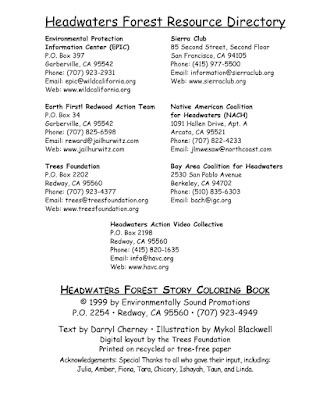






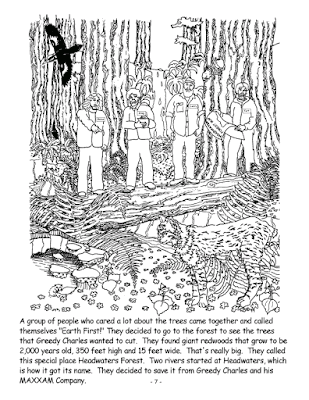
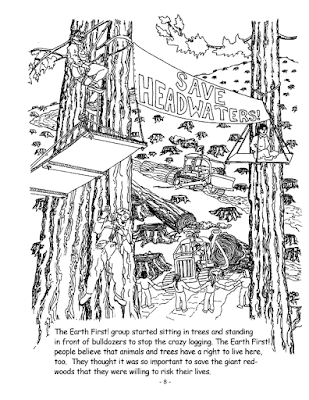









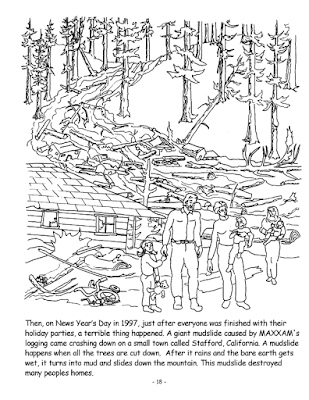







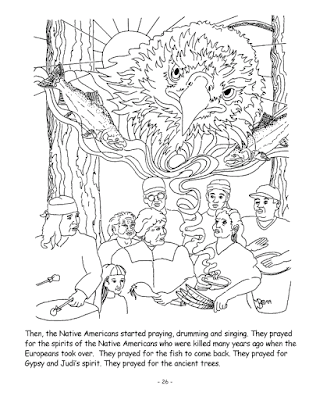












%20(1).jpg)
.jpg)



%20(1).jpg)



.jpg)